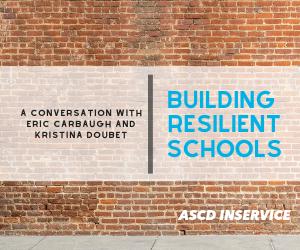By Stephanie Burroughs
The task ahead to get our students on track academically and socially is great. Our students need us. It’s time to look at potential systemic changes that will foster safe and supportive school environments for the fall. District leaders must acknowledge the link between student mental health and student connectedness in school, and also leverage preventative measures to make sure students have the mental health support they need.
Student Connectedness and Mental Health
Years before the pandemic, education researchers and policymakers were acutely aware of rising mental health incidences in K-12 student populations and their warning signs. A 2015 Gallup Poll showed that only 39 percent of secondary students nationwide could identify an adult in the building who cared about them. Meanwhile, research from the National Institute of Mental Health highlighted that safe and positive classroom environments boost students’ mental and emotional well-being, while the Center for Disease Control and Prevention found that the more students feel connected to school, the more likely they are to engage in healthy behaviors. In other words, we had identified a nationwide problem in our schools and clearly connected this problem to student mental health, with a mitigation strategy in hand.
Improving connections between students and their school communities not only lessens student mental health issues, but also supports students academically, socially, and emotionally—and it should be how we frame our approach to the future of learning.
When we build strong relationships with our students, they gain strong connections to their school communities.
Schools should be hyper-focused on how to create and maintain strong relationships with their students. In their 2009 report (mentioned above), the CDC identified four focal areas for districts to improve student connectedness: adult support, belonging to a positive peer group, commitment to education, and school environment.
Improving student connectedness in school requires that the adults in the building are able to show that they care about each of their students and are invested in each student’s education. In other words, relationships matter.
If we want to prioritize building strong relationships, we should also prioritize small class sizes.
There’s a simple truth that we are better able to focus on the individual needs of those in our care when there are fewer individuals in our care. There are other industries that understand this well, such as hospitals that make adjustments to patient ratios when patients require acute or intensive care. While we should apply this same logic to class size in our schools, the argument for decreasing class size is often muddied by a false comparison between class size and teacher quality. Teacher quality matters, but the argument to decrease class size should be to improve student-teacher relationships and provide our teachers with the opportunity to invest in the education of each of the individuals in their classroom. We need intensive care in our schools.
The reduction in class size is costly, but the net gain in building stronger teacher-student relationships and increasing academic achievement are worth the investment.
Policymakers and state education agencies have discussed the benefits of decreasing class size in the past. However, these arguments have been overshadowed by a looming teacher shortage and tightening education budgets across the nation. More than a decade ago, states like California and North Carolina attempted to reduce class size and ran into financial and quality concerns. However, we owe it to our students to give class size a second look. If we value our students’ mental health and we want our students to achieve their full potential, we need national and state education funding formulas to take class size reduction seriously.








